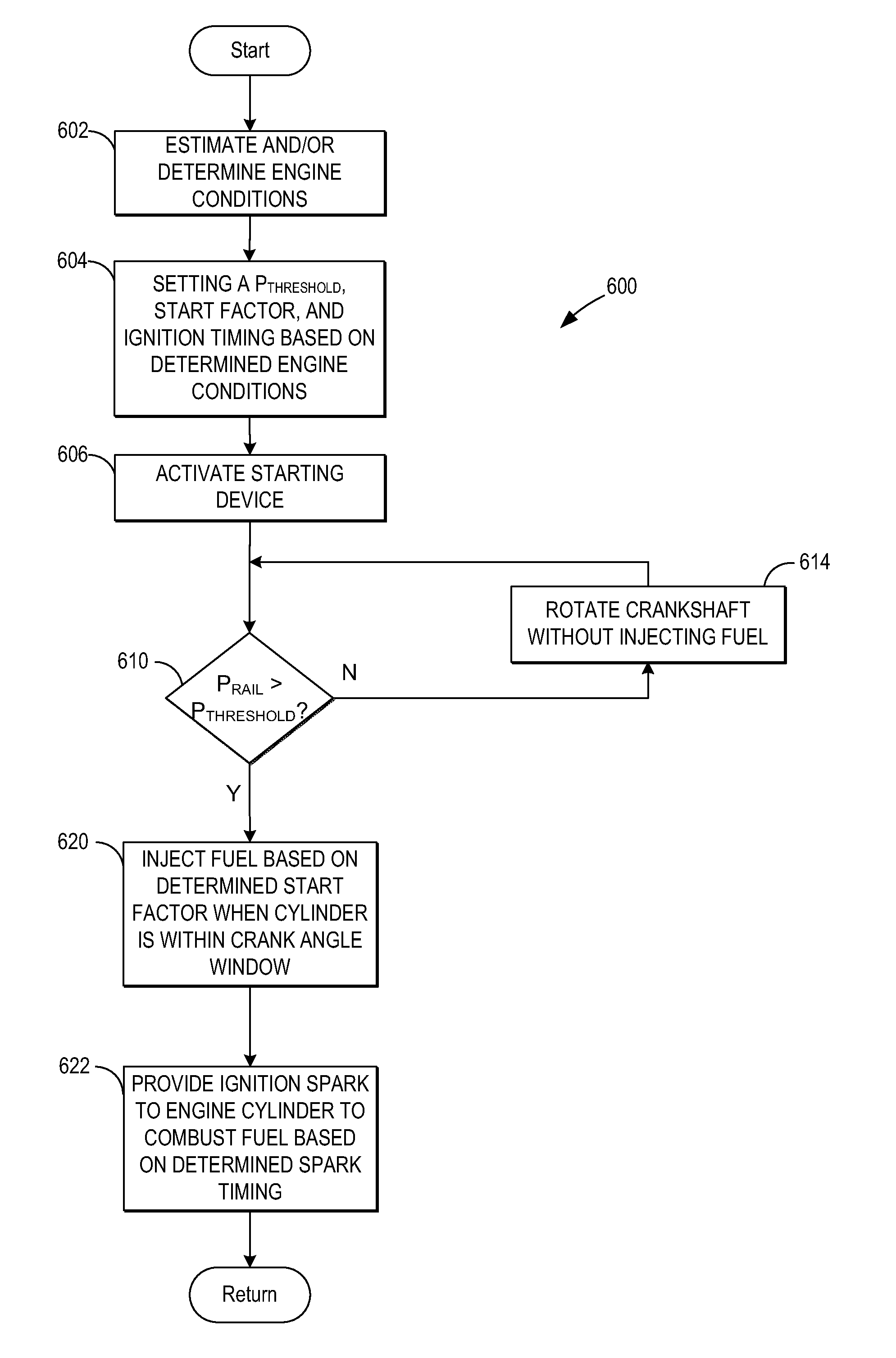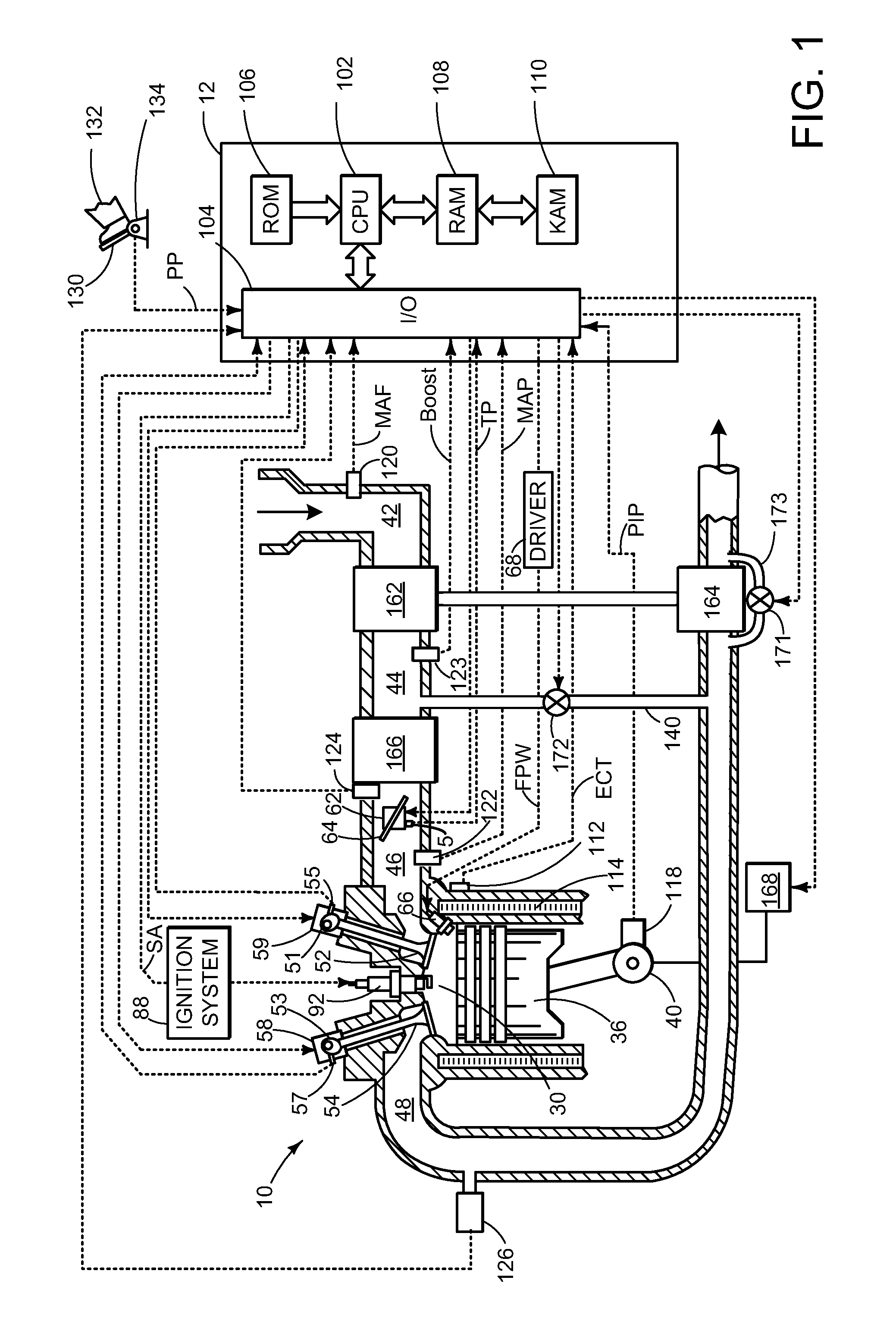Methods for reducing raw particulate engine emissions
a technology of raw particulate and engine, applied in the direction of machines/engines, electric control, combustion engines, etc., can solve the problems of increasing pressure loss, method of load control, and reducing the efficiency of combustion engines, so as to reduce fuel consumption and efficiency, increase the overall engine efficiency, and reduce fuel consumption. the effect of consumption
- Summary
- Abstract
- Description
- Claims
- Application Information
AI Technical Summary
Benefits of technology
Problems solved by technology
Method used
Image
Examples
Embodiment Construction
[0025]The methods described may reduce raw particulate emissions from an applied-ignition internal combustion engine. As such, FIGS. 1-2 shows an example engine diagram in which a piston connected to a crankshaft oscillates between a BDC position and a TDC position during engine operation, and in which an injection nozzle is provided for directly injecting the fuel. Then, FIGS. 3-4 illustrate the relationship of various engine parameters to engine start duration, which may be reduced relative to a time threshold using the methods described. FIG. 5 further illustrates how a controller may make one or more adjustments during the starting phase based on the engine conditions at engine start-up. FIG. 6 illustrates an example flow chart of the method according to the present disclosure, while FIGS. 7-8 provide graphical illustrations of the engine start and crank operations to provide an alternate illustration of the methods described herein.
[0026]Referring now to FIG. 1, internal combus...
PUM
 Login to View More
Login to View More Abstract
Description
Claims
Application Information
 Login to View More
Login to View More - R&D
- Intellectual Property
- Life Sciences
- Materials
- Tech Scout
- Unparalleled Data Quality
- Higher Quality Content
- 60% Fewer Hallucinations
Browse by: Latest US Patents, China's latest patents, Technical Efficacy Thesaurus, Application Domain, Technology Topic, Popular Technical Reports.
© 2025 PatSnap. All rights reserved.Legal|Privacy policy|Modern Slavery Act Transparency Statement|Sitemap|About US| Contact US: help@patsnap.com



